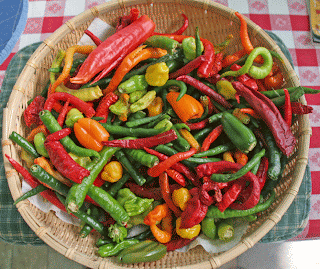Jim Long
Wasted Food for the Holidays
I’ve been wondering lately if ours is really the only country in the world that has so much food we can afford to throw it away. It came to mind right after Halloween when I saw large numbers of pumpkins thrown in ditches along the roadsides. And more pumpkins stacked beside garbage bins in front of houses, waiting to be carted away to the landfills.
For Thanksgiving I’d planned to stuff and bake a pumpkin. My recipe calls for a 3 pound pumpkin, top cut off like a jack-o-lantern and the innards removed. Into that go 3 cups of bread cubes, 4 ounces of cheddar cheese cubes, 2 finely chopped garlic cloves, 4 strips cooked bacon, crumbled, a diced green onion, 1 tablespoon chopped fresh thyme (I like orange thyme), 1/3 cup heavy cream and a tiny pinch of nutmeg. Mix all that together in the pumpkin, put the lid on and bake it for about 90 minutes at 325 degrees F. When the pumpkin is tender, remove it from the oven and let it set for about 15 minutes to cool. Just before serving, mix some of the pumpkin with the stuffing. It’s great.
But guess what? There were no pumpkins to be had at any of the stores. When I inquired at the produce departments of some stores I was told they had trashed their left over pumpkins after Halloween. One of them said, “People don’t think of pumpkins as food, just decoration so we throw them in the dumpster to make room for other things.”
I can’t imagine not recognizing pumpkins and squashes as food. Nor can I imagine throwing away crates of pumpkins to be sent to the landfill. Hogs eat pumpkins. They can be put in the compost where they become more soil. Even people eat pumpkins!
We’re fortunate we have such bounty that we can be wasteful. I was brought up to believe it’s wrong, even immoral, to waste food. Evidently I’m in the minority. It just seems like there should be a better solution. Maybe I’m just old fashioned.
This week in the garden we’ve planted radishes, lettuce and carrots in the cold frame. To see more of what’s happening in the garden each week visit my garden blog: jimlongsgarden.blogspot.com. Present and past Ozarks Gardening columns in this newspaper can be found at: ozarksgardening.blogspot.com. Happy gardening!




